I once conducted an experiment, during which I attempted to spend the entire day without uttering a single word.

Needless to say, I failed. There were clear instances during my day when some explicit form of communication from my end was required and necessary; not just to avoid being rude or looking silly, but to remain properly functional on the stage of my reality and perform my role in it well.

For a while, I tried to circumvent this problem via the loophole of writing down full sentences for the fellow actors on my stage. But this quickly turned my whole exercise into a farce, and I abandoned it after a few very comically sad attempts.
The purpose of my experiment was not to test how long I could go without saying things out aloud; it was to explore how much we as human beings could communicate when we were robbed of our words.
Have we as a species become so dependent on our own cultural construct of language that we are now completely incapable of functioning without it?
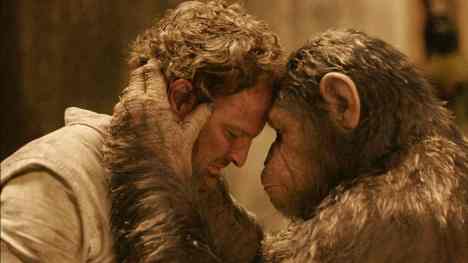
Unsurprisingly, the answer is yes. Yes, we have.
I don’t know what I expected to find when I began the experiment. But despite its failure, I learned a lot about what we as humans are capable of saying without our use of language.

I learned that sometimes, the words that we use to punctuate our silences add nothing more to what we are trying to say than paint or perfume applied on a flower.

Meaningful silence is profound. And that which stands unspoken but understood between us is powerful.
And for us as storytellers, I think it would be a worthwhile exercise to explore the depth and scope of our silences, and to seriously consider how we can use them to enrich our narratives.
But before we dive right into this, I think it would be wise for us to first decide where we should draw the line.

If we were to be nitpicky about it, any means by which one human being chooses to express themselves to another, could (correctly) be considered as communication. A smile, a kiss, a hug, a slap in the face, a stab in the back; these are all legitimate and completely valid ways in which we as a species express ourselves to one another.
Even the act of deliberately ignoring another person and refusing to acknowledge their presence is our way of telling them something. And from there, it is only a short leap away from other methods we have invented to express ourselves, like Music, Art and Dance.
So the question then becomes, how and where do we draw our line between Language and Communication?

I think a reasonable metric to distinguish between the two would be to ask ourselves “Can this be understood across cultural borders?” or rather, “Can this be understood without anyone having to explain it?”
That being said, I would argue that a nod or a shake of the head sits right on the edge of that border, while sign language crosses over into the realm of language.
Well, now that we know where the distinction between language and communication lies, we can begin to ask ourselves what we can effectively manage to communicate without having to resort to the use of language.
These are just a few of the things that I have noticed over the course of my exposure to people and narrative in general:
1. Our State of Mind:
This one is fairly obvious and by far the most easily implementable. In fact, in most cases the narrative directors do not even need to explicitly call this out. It is part of the actor’s job to understand the state of mind of their character and portray it convincingly in their delivery.
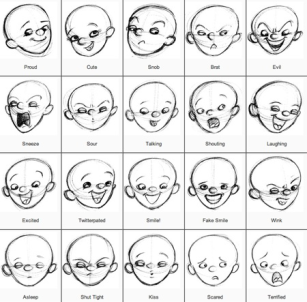
Any script that is reasonably well written should by itself be enough for the actors to understand the bare minimum of what is expected of them in their delivery. And if not even that is being conveyed, then either the script needs to be changed, or the actor.

However, the more subtle and interesting ways in which our state of mind can be conveyed, is through the intelligent usage of things like tone, restraint and indifference.
All the interesting pieces of narrative delivery live in the space between the superfluous and the brutally honest. In other words, whenever we invite the audience to read in between the lines and infer the implied, it’s like were sharing a little secret with them. And we all know how exciting it is to feel like we are “in on a secret“.

The undertone of heartbreak and disappointment painted over with the vocalization of happiness and congratulations.
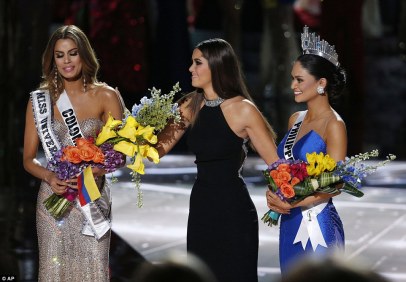
The maintenance of social niceties and polite conversation, layered on top of the undertones of seething jealousy and silenced vitriol.

Deep and passionate love masquerading as anger and resentment.
These are all wonderfully delightful experiences to watch, because some primal part of our psyche enjoys the tension in a bow held taught far more than the release of an arrow we know to be fatal.
To wrap this up, if you ever write your characters into a position where they feel compelled to break down, do everything in your power to help them fight it; because that struggle is FAR more compelling to watch.
2. Our Perception of Self:
Our perception of self is an interesting phenomenon and is usually revealed in subtle behavioral patterns. The way we walk, the way we carry ourselves and the way we behave around others.

Things like our inherent kindness, underlying sadism, self-confidence or self-loathing can and should be brought out and painted upon our characters to give them compelling depth and dimension.
But an interesting dichotomy arises when we critically examine our characters through the filters of who they want to be perceived as in contrast to who they really are. And for truly compelling characters, these two usually exist in interesting opposition.

The way people behave around those they aren’t afraid to trust or be vulnerable in front of can give us great insight into their true character.
We, like all our characters, prefer to hide behind our façade of composure and control, and pretend like we know what we are doing. But every once in a while, it is nice to just drop the act and allow ourselves to lean on those who already know us intimately for who we really are, and do not judge us for it but rather, quietly understand.
For most of us, these are our friends, our family, our loved ones.
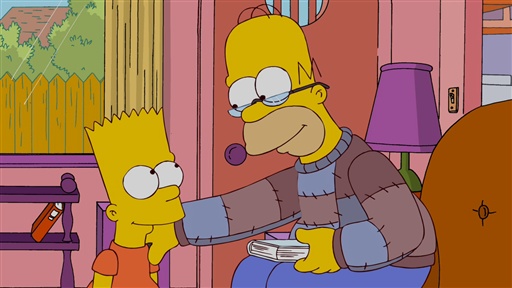
For others, they are our mortal enemies.

And for a very sad minority, there is no one but themselves. They just go, lock themselves in the bathroom and cry quietly into a towel for hours, before regaining their composure and heading back out to face the world.
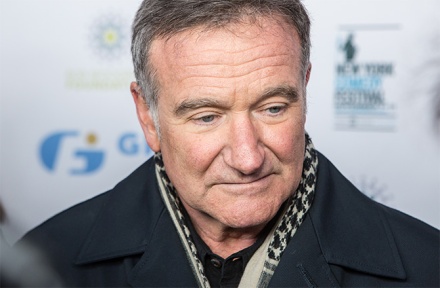
Regardless. Whatever be the case for the character you have written and howsoever they allow themselves to be perceived publicly, every now and then, just remember to afford your audience the opportunity to glimpse into their naked soul. I guarantee that they will be far more memorable for it.
3. Our Perception of Others:
The way we behave around others and the way they behave around us allows us to establish the all important relationship of STATUS between our characters. There are plenty of ways to implicitly establish status in a relationship without explicitly having to call it out, but I will not elaborate on that here. There have been whole books written on the subject, and if you are looking to delve further into the matter, I would recommend that you start here.
But as storytellers, we are essentially concerned with three modes of status that we normally deal with:
1. Higher Status:

2. Lower Status:
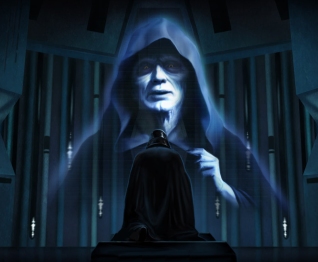
3. Equal Status:

And for us, as storytellers, amazing things can be accomplished with an implicit understanding of status between our characters.
There can be a wonderful Resonance of Status between our characters, where they both understand and respect the nature of their relationship, and together carry forward the narrative while accomplishing great things in the process.

Or, there can be a delicious Dissonance of Status, where both parties have a skewed understanding what the the true nature of their status relationship is, and typically someone of lower status will think themselves better than someone of higher status and take every opportunity to correct or challenge them.

Whether or not this is a valid claim, it leads to delightfully juicy conflict either way and furthers the narrative in an interesting direction.

Another interesting, but not as often used method to create conflict through dissonance of status is to begin with an understanding of equal status, and gradually make one player change the status quo by putting themselves on higher ground, thus creating a messy but compelling conflict from the ruins of what used to be a fruitful relationship.
4. Our Motivations:
Our motivations themselves are not usually implicit. Normally, they are called out quite evidently in most mainstream narrative. The interesting stuff begins to happen when you tease and taunt your characters with their motivations and then, with a snap of your fingers, take it away from them like a carrot dangling on a chain.
Seriously. Try suddenly and unexpectedly giving your characters EXACTLY what they want, and then let it slip through their fingers. Turn it into dust in the wind. Or just put it further out from their reach than it was before you teased them with it.
The way your characters respond to having that done to them will tell you a LOT about them. Their mettle, their moral fabric, their level of caution, their equanimity, their patience, their determination, their desperation, their pride…
The list goes on and on and on…
But more than exposing your characters for who they really are, this sort of a tease opens up an all important window of opportunity to highlight and introduce the beginning of their Character Development. And that’s powerful storytelling stuff right there.
I found a nice little short film that does this really well. I hope you enjoy it!
5. Our Footprints:
By our footprints, I mean any and every imprint that we leave on our surroundings to evidence our presence there, and the impact that we have had. There is a lot that you can tell about the nature of the people that inhabit a space and just by examining the space itself.
Instead of elaborating on this too much, let me just show you a few concrete visual examples.
Pittsburgh – The Last of Us

The Millennium Falcon – Not Sleek and Shiny like most Sci-fi spaceships that look like they’ve never really been used

Ratman’s Lair – Portal – The Cake is a Lie!
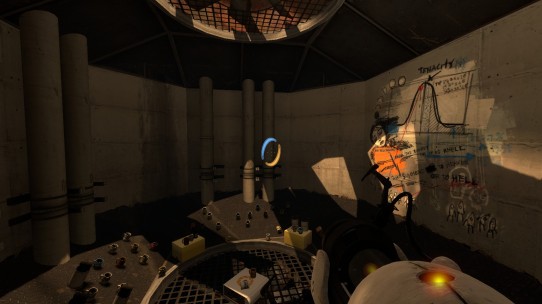
My Brother’s Desk

My Desk

Even the imprints that we leave behind on the lives of other people that we interact with says a lot about who we are.

But enough said. Let’s start to wrap this up.
Final thoughts:
This list is by no means comprehensive. I am sure there are plenty of other interesting ways to use the unsaid to say more than we ever could with words, and if you can think of any, please do me a favour and Tweet them at me @JerryTJohn.
That being said, there are a couple of other things that did not fit neatly into the five broad categories that I listed above, so here are my final two thoughts on how to use the unspoken to great effect:
First, when crafting your character’s reactions to certain events, take your audience’s expectations and turn them on their head.
Scenes that do this well always manage to create an interesting juxtaposition that provides a surprising amount of depth and insight into the characters, their relationships and the world they live in. My favourite example of this was in the final scene of the 2015 film, Sicario. It’s a movie about the rampant drug trade along the Mexican border and the costs and consequences associated with it. To give you some context, the boy in the scene has recently lost his father (a corrupt cop who was working as a drug mule). In the absence of his father, his mother (the widow who saw it coming), takes the boy to the football practice instead. In the middle of the game, they suddenly hear the eruption of gunshots firing off nearby.
And finally, cleverly leave just a little bit unsaid. Let your audience join the dots and fill in the gaps for you.
Remember what I’d said earlier about the tension in a taught bow being more compelling than the actual release of the arrow? Well the human mind is excellent at extrapolation. And if you leave just enough breadcrumbs lying around, your audience will follow them straight into the vast and expansive universe of their imaginations and fill in the strategic gaps you left behind with more colourful imagery than you could ever do justice to with mere words or images.
In “The Last of Us”, when we are about to die, every once in a while, the protagonist Joel will find himself in the following situation:

The bloater here is preparing himself to rip Joel’s face apart. Like, literally yank his lower jaw off his face while he kicks and screams. But the scene fades to black right before it happens.
We do not get to see or hear it happen.
Why!? It’s not like Naughty Dog’s animators couldn’t do a kick-ass job of animating Joel’s face ripping apart like tissue paper. But they chose to leave it this way. And do you know why?
Because our imaginations do a much better job of filling in those gaps for them.
So the next time you have an antagonist that everyone absolutely hates and wants to see die in the worst way possible, don’t waste your time coming up with graphically torturous ways of killing him off. None of it will be enough or do him any kind of justice.

Instead, just feed your pet tiger a steak laced with Viagra and leave your antagonist locked up in a cage with him.

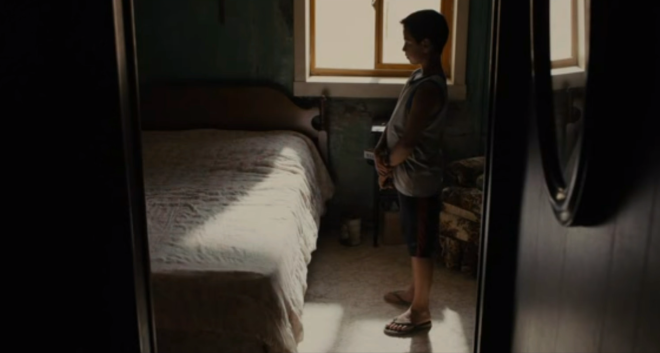
A great list of ways to tell stories, with lots of examples! I think it’s interesting to see how games like Journey that are told without a single word. I don’t know if all of these aspects are disjoint from talking though. For example, “inherent kindness, underlying sadism, self-confidence or self-loathing”, as part of the perception of self, can all be conveyed with or without talking, or with both. Maybe it’s just that they don’t require talking, or thay they are larger aspects of overall behavior that are comprised of many smaller actions. I appreciated the images, they really livened up the post, but I didn’t understand some of them (e.g. Robin Williams — I think I know the context, but I can’t quite remember it) — it would’ve been helpful for me to add captions. In any case, I learned a lot of useful tools to use, and really enjoyed the post!
LikeLike
A fun read. I think these ideas have close ties to “information density” and saying things on multiple levels especially the quick nod to How I Met your mother. I’d like to hear your thoughts on how these ideas have shown up in games over time and their ties to our level of visual fidelity and technological constraints. I’d also say that Spec Ops the Line is an excellent example of many of these strategies. It might have been a stronger piece if your examples weren’t as broad. If you had taken multiple examples from the same or similar sources and gone more in depth on the context. Regardless this gave me a lot to think about and I thank you for that.
LikeLike
Great lead-in to an article filled with useful tips and examples. Too often do we use text as a crutch, and I agree that good storytelling and narrative should convey the ideas you listed implicitly, just as good films and actors do. You also hinted at a lot of useful concepts, like the element of surprise and letting the audience’s imagination fill in the gaps.
Just a minor comment on style: I enjoyed the use of images to convey your message, but feel that sometimes you went overboard. Stock photos specifically could have been used more sparingly; some examples distracted more than backed ideas. But other than that, it was a nice and detailed read.
LikeLike
Funnily enough, my post for the week conspicuously claims the opposite of your final point. While I’m on board with everything else you said, I would attribute the power of off-screen death to anticipation, rather than my imagination being especially potent.
As for the rest, it’s absolutely true that there’s power in what is unsaid, just like visual artists talk about using negative space. The trouble with the negative space is that it deals better in generalities than specifics, and that’s where the words come in. A little context can be the difference between revelatory acting and an apparent lack of substance.
LikeLike
Hey Jerry: You should read Impro by Keith Johnstone–think you’d like it.
LikeLike
I like how you moved from the initial experiment to a series of thoughts which I found really interesting to read. You mention that exploring the depths and scope of silence to enrich our narratives feels really powerful. The things you noticed over the course of your exposure to people and narrative in general was compelling and I agree with most of it. For instance you have done a great job writing about topics such as state of mind and what role perception plays. The only thing that put me off this article was the ending. Man I didn’t think anyone in the world hates him enough to think of doing something so horrendous yet a little funny in a weird way.
LikeLike